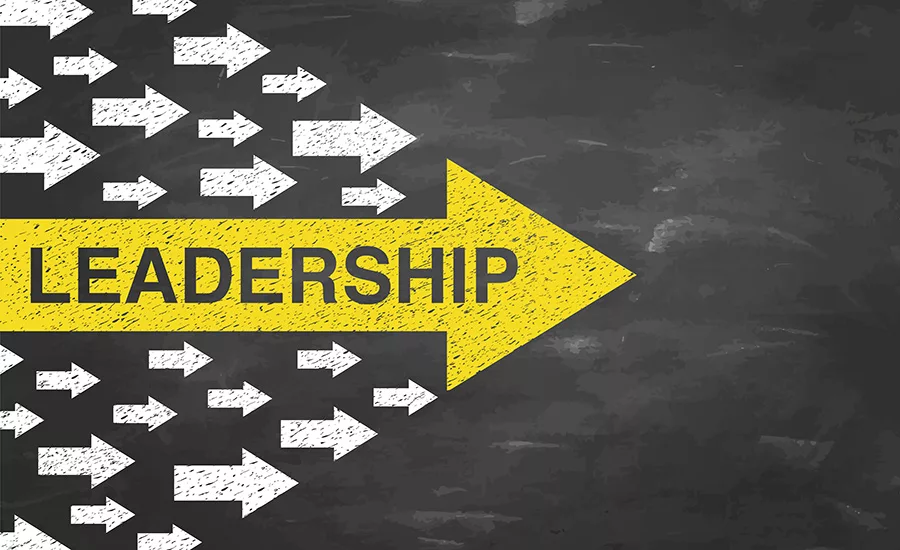Becoming the Leader Your Team Needs: Inspiring Your People to Pursue Excellence
The Intentional Restorer

Photo credit: phototechno/DigitalVision Vectors via Getty Images
Like many of you, I’ve had to build teams with technicians that were cross-trained in water damage mitigation, mold growth removal, contents inventory and packout, crime scene decontamination, fire damage restoration, and a myriad of skills in between. At a midway point in my career, I found myself getting lost in where to focus my attention to help my team develop the skills necessary to be state of the art as we served our customers.
While it’s silly to believe that we can train our people to master anything by holding training once a week for 30 minutes to an hour, it is essential that we do so. If you want your team to perform, you have to regularly train them. In my upcoming book, So, You Want To Be a Project Manager? I outline a framework for training that I call The DYOJO Chart. The collaboration on team and worksite issues, as well as clarifying your expectations around work scopes, is as important as the training itself.
The Hall of Fame coach of the Green Bay Packers, Vince Lombardi, stated his perspective on team development this way, “Perfection is not attainable. But if we chase perfection, we can catch excellence.” As a person in a position of leadership, you are in a coaching role. You must lead by example, always developing your own skills and helping your team members develop theirs. Excellence is the product of doing the right thing consistently.
The DYOJO Formula for Excellence: Do it right + Do it efficiently + Do it excellently.
Sometimes we don’t know where to start. Always start with the question, “Do I know how to do it right?” This can be a loaded question because everyone has their opinion on the right way to do something. Doing it the right way starts with compulsory standards which include Occupational Safety and Health Administration (OSHA) safety regulations as well as the building codes of local jurisdictions.
In his book Leadership in Restorative Drying, Ken Larsen, CR, shares three important distinctions for our industry:
- Standard Practice is a phrase used to describe practices normally and regularly performed by professionals of a trade. They may or may not reflect competence.
- Standard of Care in the structural restorative drying industry has been defined [by the IICRC S500 consensus body standard committee] to be: “practices that are common to reasonably prudent members of the trade who are recognized in the industry as qualified and competent.”
- State of the Art refers to the highest level of general development, as of a device, technique or scientific field achieved at a particular time.
If your work is illegal, unsafe or non-compliant, you can objectively say that it does not meet the low threshold of Standard of Practice. Similar to the idea of “do no harm,” your customers should at least be restored to resemble pre-loss conditions, not be worse off for having interacted with your organization. Doing it right may start with a nice certificate that you hang on the wall, but that should initiate the learning process not conclude it.
The next measure of doing it right would be work that meets industry Standards of Care and best practices. These are voluntary standards that record the consensus norms of our trade. In property restoration, these would include guidelines such as the Institute of Inspection Cleaning and Restoration Certification (IICRC) S500 and S520 documents for water damage mitigation and microbial remediation respectively. Know the law and follow it. Know the standards and, as part of the pursuit of excellence, learn to apply them accurately.
Mastery in any area means we follow the consensus standards as a baseline, but that we continue to learn, innovate, and adapt our practices. The S520 Standard and Reference Guide for Professional Mold Remediation includes this disclaimer on the opening page: “Users of this document should stay updated and informed about developments in the field of mold remediation, implement changes in technology and procedures as appropriate.” State of the art does not have to be complex to be effective.
All professionals are bound by laws and regulations, yet as restorers, “In certain circumstances, common sense, experience, and professional judgment may justify a deviation from this Standard and Reference Guide.” All our decisions are subject to new data, “Which may invalidate any or all of the information contained herein.” On the jobsite, your technical knowledge will have to be combined with practical knowledge if you want to accomplish your goals.
We train to be Intentional Restorers (a.k.a. Doctors of Disaster), yet we often fail to bring the same scientific approach from our fieldwork to our people skills, leadership development and cultural improvement. Lex Sisney, our guest for The DYOJO Podcast, has a wonderful book and system titled Organizational Physics. If you have a scientific mind, this resource will help you apply these principles to the common and repetitive issues in business.
The reader will note that at several points in my writing (including my book) I have emphasized in sentences an item that you should stop doing as well as the appropriate replacement action, i.e. something you should start doing. I first heard about this simple framework from Sisney. He applies this skillfully to a situation where you are training and/or disciplining a team member.
The next time you are communicating something that needs to change, help your team to understand and adjust their mindset and habits in a sequence of STOP-START-IDEAL. Sisney advises, “Begin first by communicating what they need to STOP doing, then communicate what they need to START doing, and then paint a picture to define in unarguable terms what the IDEAL would look like.” [1]
As a manager it is important to address issues while they are fresh or poor mindsets will be perceived as acceptable and will become habits. In these coaching moments, you want to cast the broader picture, or as some people call it, discuss “The why.” Being candid with your team is essential to opening conversations that will enhance your growth.
Pursuing excellence means we are constantly improving both our production (external) as well as our process (internal). The scientific process of recognizing symptoms so that you can address sources is critical on the ground level with employees as well as at the organizational level with the whole company. If you treat the symptoms, they may eventually go away as the body heals itself, but you will be much more effective if you can get to the root cause that is producing the symptoms.
Apply the same investigative mindset that we teach our teams to use in water-damaged homes when you are dealing with interpersonal and organizational challenges. We know the carpet is wet. If we set an air mover on the wet carpet, we may or may not affect a change in the environment. We have to ask, “What is causing this carpet to be wet?”
As we use our moisture meter to further determine the extent of the damages and close in on the potential source(s) of the damage, we are able to better determine what would prevent additional water from affecting the structure. Once we address and stop the source, we now have to determine and deal with the extent of the damages.
As a person in a position of leadership, this is the same process with regard to conflict resolution and team development. Issues will arise within your team. Don’t get hung up on the symptoms, try to dig into the sources and work your way through to the symptoms only after you have identified and begun to treat the causes. The longer you allow an issue to fester, the greater the extent of the damages will embed themselves into your team dynamics.
If we want our team to pursue excellence we must be pursuing State of the Art leadership development. This does not mean that we have to be Ph.D.-level psychologists that solve the deepest rooted issues in every employee we hire. But, if you want to be above average as an organization, you have to invest more than the average (status quo) level of care in improving your ability to address the people stuff.
You will always be a student of the industry. If you want to be an effective manager, you also have to be a student of people. Cornelius Fichtner is regarded by many as a leading thinker in the area of project management. With regard to soft skills, Fichtner says, “The P in PM is as much about ‘people management’ as it is about ‘project management.’” So, what do you need to stop doing so that you can replace those ineffective energies into what you should start doing to continue to develop into the leader that your team needs?
[1] Sisney, L. Communicating for Better, Faster Change Management. Organizational Physics. https://organizationalphysics.com/2019/09/18/communicating-for-better-faster-change-management/
Looking for a reprint of this article?
From high-res PDFs to custom plaques, order your copy today!








